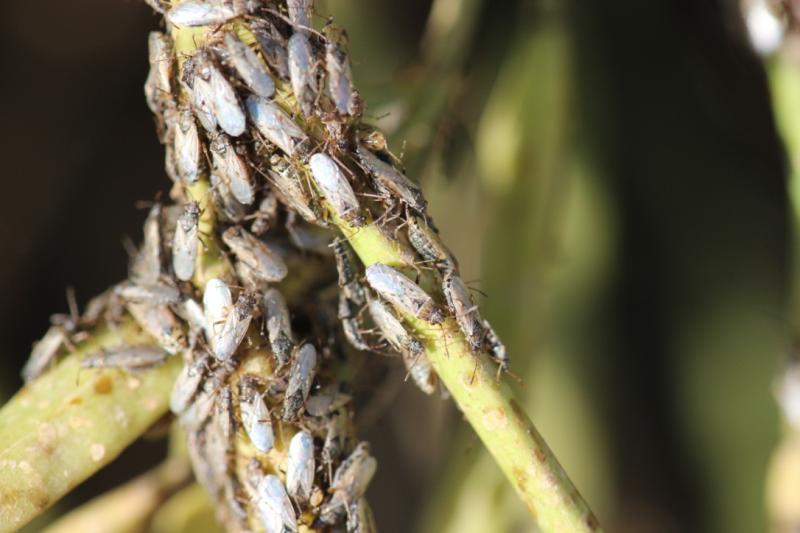Swarms of false chinch bugs have started appearing in South Dakota this month. Although they are typically only a nuisance pest, their populations can become magnified during cool, wet springs (like this year). In high abundances, false chinch bugs can pose a threat to garden plants, especially Brassica plants such as broccoli, cauliflower, turnips, and cabbage.
Profile

Adult false chinch bugs are a grayish-brown color and about 1/8 inch in length (Figure 1). They first emerge from grasslands and weedy fields in the spring. As these areas dry down, false chinch bugs eventually migrate to other landscapes in search of food. The adults lay eggs in the soil near Brassica plants and nymphs hatch in about 4 days. Upon hatching, the nymphs will feed and mature into adults in 3 weeks. There are usually several generations of false chinch bugs each year. On years when large populations are present, each generation can show up suddenly in a massive wave, which can be very overwhelming for producers.
False chinch bugs feed by sucking the sap from plants. Injury appears as wilting on the upper leaves, causing them to turn brown with the edges becoming curled. Noticeable damage can occur within days on plants that are heavily infested. False chinch bugs are most active during the evening hours or in the morning. During the heat of the day, they will hide in the soil or underneath plants.
Management
In a garden setting, management of false chinch bugs is unnecessary unless they appear in very high densities. With regular watering, host plants (Brassica spp.) are usually able to tolerate feeding; however, the damage may be more severe on young plants and result in stunting. Floating row covers can act as an effective barrier to protect the plants inside. Alternatively, applying a pyrethrin insecticide as a knock-down spray can help reduce false chinch bug populations and lessen their feeding impact.


